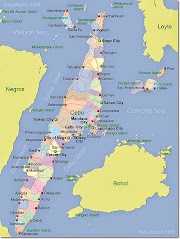A city evaded by most travelers, Cotabato City’s reputation is scarred by bombings, infrequent kidnappings and the infamous Maguindanao massacre, the single deadliest attack for journalists in history. What was once one of the most progressive cities in Mindanao, has declined economically in the past few years. Located at the heart of Maguindanao, but politically independent from the said province, this blemished beauty is slowly making its mark on the map of domestic tourism.
After a heavy breakfast at one of the eateries near Filipino Hotel, we walked further down Sinsuat Avenue stopping by its famous landmark – the Sultan Kudarat monument. This brave man is a Muslim hero who successfully opposed the Spanish colonization, and hindered the Christianization of Mindanao. His monument stands in Pedro Colina Hill which was once his lookout. At the base of the hill, one can find the Kutawato Cave, “kuta” means stone and “wato” is fort. This cave which is said to be the only cave in the Philippines located in the heart of the city used to be a hide-out of the Japanese soldiers during World War II.
The old municipal building in front of Rizal Park is now a mecca for the Philippine Marines, while a new municipal building lies outside the city center which can be reached by an Awang-bound jeep. Along the way, at Governor Guttierez Street, a good stop over is the Barter Trade Center. Although the original concept of barter (exchange of commodities) no longer exists here, it is still worth a visit because of the abundance of bargain goods. Original hand crafted Maranao products, brassware, sarongs, hijab (headscarf worn by Muslim women), tubao (a traditional Muslim headdress consisting of a long scarf wrapped around the head), batiks, malong (a tubular Muslim fabric worn as a skirt of blanket) and inaul (a Maguindanao hand-woven fabric) are sold everywhere.
But the highlight of our trip is the emerging tourist attraction of Cotabato City. The stunning Grand Mosque named after the Sultan of Brunei - Sultan Hadji Hassanal Bolkiah Masjid who partially funded this massive structure. The mosque has yellow domes and a couple of minarets, the walls inside are painted in white. This massive mosque can accommodate up to 800 male and 400 female worshippers. It can be reached by a habal-habal (motorcycle) or tricycle from the road fronting the Husky Bus Terminal.
With the rise of the Sultan Hadji Hassanal Bolkiah Masjid comes the hope that eventually more and more visitors will visit Cotabato City and finally understand why the city they fear earned the moniker - “The Promise Land”.
(Gael Hilotin is a female solo traveler who is currently traveling non-stop around the Philippines. Follow her adventures here: Pinay Solo Backpacker)yahoo.
(Gael Hilotin is a female solo traveler who is currently traveling non-stop around the Philippines. Follow her adventures here: Pinay Solo Backpacker)yahoo.








1 Comments
Greetings from Los angeles! I'm bored to death at work so I decided to browse your site on my iphone during lunch break. I really like the information you present here and can't wait to take a look
ReplyDeletewhen I get home. I'm shocked at how fast your blog loaded on my cell phone .. I'm not even using WIFI,
just 3G .. Anyways, superb blog!
my web page :: residential moving company Newark NJ